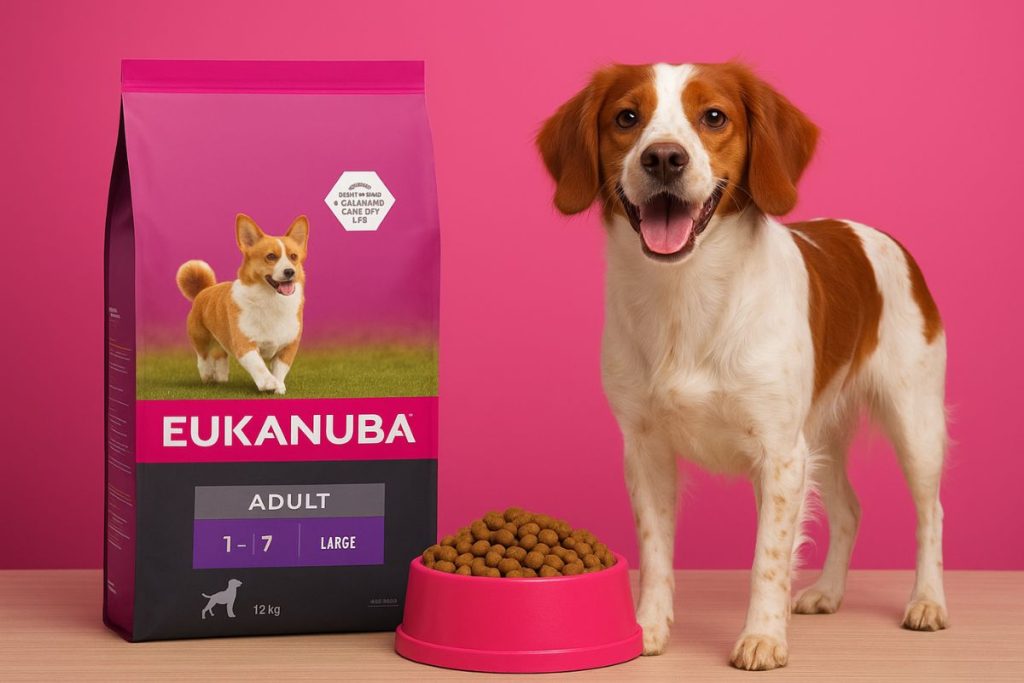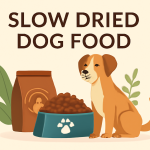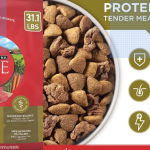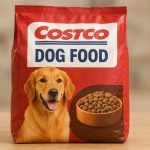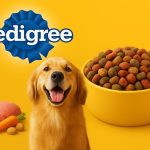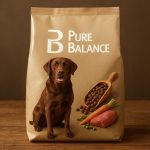Active dogs – those that compete in sports, work outdoors, or simply love long hikes – need diets tailored to their high energy and performance needs. Top brands like Royal Canin dog food, Hill’s Science Diet, and Eukanuba offer specialized formulas for active canines. In particular, Eukanuba’s Active Dog Food line is formulated to fuel performance, support lean muscle, and maintain health for active dogs.
In this guide, we explore the key components of active dog nutrition, compare leading dog food brands, and share tips (and FAQ answers) on choosing the best food for dogs of every life stage, including senior or sensitive pets. Throughout, we highlight how Eukanuba and other brands incorporate protein, fats, carbohydrates, and supplements (like salmon or glucosamine) to give your dog their best fuel.
Understanding Active Dog Nutrition
Active dogs burn more energy and stress their bodies differently than sedentary pets. Nutritional needs increase, meaning more calories and specific nutrients are crucial. According to Eukanuba, “active dogs derive energy from three nutrient classes: protein, fat, and carbohydrates”. That means a balanced diet must include all three in optimal ratios:
- High-quality protein to build and repair muscle (especially important after exercise). Brands use meat, fish or eggs as primary sources.
- Healthy fats for dense energy and essential fatty acids (like Omega-3s from fish oil) that support coat, skin, and joint health.
- Complex carbohydrates (from grains or vegetables) to provide quick energy and support the nervous system. Even Eukanuba notes carbs are “unsung heroes” – dogs use glucose for their muscles and brains, especially during longer activity.
In practice, a performance dog food will be higher in calories and contain nutrient boosts that sedentary dogs don’t need. For example, Eukanuba’s Active Dog Food is “scientifically formulated” with extra protein and fats to stay fueled throughout the day. Their Amazon listings confirm this focus: Eukanuba adult dry food is “formulated with high-quality animal protein, glucosamine, and chondroitin to promote lean muscle strength and agile joints for active dogs”. In short, active dog nutrition means energy-dense, protein-rich kibble with joint and brain support.
- Key nutrients for active dogs:
- Muscle & Joint Support: High-quality animal proteins (chicken, beef, lamb) with added glucosamine and chondroitin to maintain lean muscle mass and support joints.
- Brain & Vision: Ingredients like DHA (omega-3) and vitamin E to support cognitive function and vision, especially important for working or training dogs.
- Balanced Energy: Optimal levels of fats and complex carbs to sustain long-duration activity.
- Antioxidants & Vitamins: Nutrients like vitamin C, A, and selenium for immune health and recovery.
- Digestive Aids: Fibers and prebiotics for gut health, plus possibly probiotics for overall immunity – useful when dogs increase intake or stress.
Eukanuba (and Royal Canin, which now owns Eukanuba) emphasize “Whole-Dog Nutrition” – meaning every bodily function, not just muscles, must be supported for peak performance. For example, the Eukanuba website reminds us that “for optimal performance a dog’s diet must contain optimal levels of all nutrients to support the whole body”. In practice, active dog formulas are usually higher in protein and fat than maintenance diets, and include extras like joint supplements and brain nutrients.
- Additional LSI terms: athletic dog diet, high-performance kibble, nutrient-dense, metabolism, Omega-3 DHA, pet health, lean muscle, energy metabolism.
Eukanuba Active Dog Food: Key Features
Eukanuba’s product line for active and working dogs is built around the above principles. According to their site, “Our active dog food is perfect for all breeds and sizes, providing the nutritional support they need to stay fueled throughout the day”. In other words, Eukanuba formulates a balanced diet to keep energy up during long activities. Some highlights of Eukanuba’s Active Dog formulas include:
- High-Quality Animal Protein: Eukanuba uses real chicken, beef, or lamb as the first ingredients, ensuring a rich source of essential amino acids. High protein supports lean muscle development and strength, key for agility or work. Their Amazon description confirms this approach: “Formulated with high-quality animal protein… [to] promote lean muscle strength… for active dogs.”
- Joint & Mobility Support: Active dogs can put extra strain on joints. Eukanuba adds glucosamine and chondroitin sulfate in every recipe to keep cartilage healthy and joints agile. This helps dogs maintain mobility as they age or train frequently.
- Healthy Fats & DHA: Fats are calorie-dense energy, and fish oils supply DHA for cognitive health. Eukanuba’s formula includes an optimized fat-to-carb ratio to “support healthy brain function and provide concentrated energy for active lifestyles”. This means dogs get sustained energy from fats, plus brain support from Omega-3s.
- Complex Carbohydrates: Contrary to some trends, Eukanuba stresses that carbs are important even for sports dogs. Ingredients like rice, barley, or sweet potato supply glucose and fiber for steady energy and digestive health.
- Antioxidants & Vitamins: Active dogs generate more free radicals. Eukanuba includes vitamins (A, C, E) and minerals to bolster immune function and recovery post-exercise.
- Specialized Kibble: Many Eukanuba Active formulas have a tooth-cleaning kibble texture (3D DentaDefense) to reduce tartar, since performance dogs often gnaw more.
- Example Formulas:
- Adult Medium Breed Active Formula: Balanced for 24–54 lb dogs, supporting those with moderate exercise routines.
- Performance 30/20 Sport Formula: A higher protein (30%) and fat (20%) formula for dogs in intensive athletic training.
- Weight Control Active Formula: For overweight active dogs, combining lower calories with nutrients to maintain energy and muscle.
Each Eukanuba product label often highlights these benefits. For instance, one listing states “Muscle and Joint Support: high-quality protein, glucosamine, chondroitin… for active dogs”. And it mentions Brain Health and Energy, containing DHA and vitamins, to keep active dogs alert and energized. These kinds of details affirm Eukanuba’s science-backed approach: they tailor nutrient levels to life stage and size, so that the dog’s “specific body, mind and energy needs” are met.
A high-quality dog food bowl filled with nutritious kibble. Active dog formulas (like Eukanuba’s) are rich in protein and balanced nutrients. Look for ingredients that support muscle, joints, and overall energy.
The bottom line: Eukanuba Active Dog Food is formulated by pet nutrition experts to fuel performance. As one Amazon description summarizes, “Fuel your active breed with a formula that’s tailored to their lifestage and breed size to match their specific body, mind and energy needs.”. In other words, feeding Eukanuba’s Active (or Performance) line means giving your dog an energy-rich diet with targeted supplements – ideal for hiking, agility, hunting, or any high-activity lifestyle.
Comparing Top Dog Food Brands
When choosing a diet for your active dog, it’s useful to compare Eukanuba with other leading brands. Each has its own focus and specialty formulas:
- Royal Canin Dog Food: Often known for breed- and condition-specific diets. Royal Canin (which now owns Eukanuba) offers performance formulas and vet diets. Their working dog lines emphasize tailored protein and nutrient blends for endurance. Like Eukanuba, Royal Canin includes joint support (glucosamine) in sports formulas. Both brands are backed by nutritional science from Mars’ research center, as seen in their joint articles. Even if you primarily use Eukanuba, know that Royal Canin’s heritage in dog nutrition means there’s a similar science-driven philosophy behind it.
- Hill’s Science Diet: Hill’s is veterinarian-recommended and also makes active/weight-control formulas. For example, Hill’s “Active Life” or “Mature Adult Athletic” recipes focus on balanced macro-nutrients and antioxidants. Hill’s tends to highlight L-carnitine (for weight management) and fiber in some recipes. Their site notes that “high-protein, high-fat diet [supports] muscle maintenance and energy” for active dogs. While we didn’t quote Hill’s directly, they often echo similar principles: protein first, no fillers, and veterinarian oversight.
- Salmon Dog Food: Salmon-based formulas (like those from Blue Buffalo, Orijen, or Hill’s) are a sub-category worth noting. Salmon dog food is rich in Omega-3 fatty acids (DHA/EPA), great for skin/coat and joint health. Eukanuba itself has salmon recipes aimed at sensitive dogs (mono-protein salmon formulas). Salmon often appears as an ingredient in healthy dog diets for its nutrient profile. If your dog enjoys fish or needs more omega-3s, consider a salmon or fish-based formula occasionally.
- Hypoallergenic Dog Food: These diets use single protein sources or novel ingredients (like duck, venison, salmon, or hydrolyzed proteins) to avoid allergies. Eukanuba sells “Daily Care” mono-protein salmon formula for food-sensitive dogs. Hill’s has a Veterinary Diet that’s hydrolyzed for allergies. Royal Canin also has hypoallergenic and limited-ingredient lines. When allergies are a concern, these specialized formulas help avoid common allergens (beef, chicken, grains, etc.).
- Best Dog Food for Senior Dogs: As dogs age, their needs change. Senior formulas are lower in calories (older dogs often move less) but higher in joint supplements and often antioxidants. For example, PetMD vets recommend senior diets with high-quality protein, glucosamine, chondroitin, antioxidants, and omega-3s. All three brands above (Eukanuba, Royal Canin, Hill’s) offer senior lines. If your active dog is getting up there in age (7-8+), consider switching to a senior formula or mixing senior food in, to protect joints and organs as exercise capacity slows.
- Other Notables: Orijen and Acana (grain-inclusive/g-free high protein brands) focus on very high meat content and fish oils. They often show up in vet listicles for performance dogs. Purina Pro Plan Sport is another high-protein option. The key is to match calories to activity: if your dog burns a lot of energy, you can go higher in protein and fat; if energy levels drop (like in seniors), dial it back.
Comparison Tip (Bullet List): When comparing brands, look for:
- Real meat as first ingredient (no “meat by-product” as primary protein).
- Balanced macros (Eukanuba Active has ~30% protein / 20% fat in performance lines).
- Joint supplements (glucosamine/chondroitin) and essential vitamins.
- Ingredient quality (no corn filler, minimal artificial additives).
- Special formulas (salmon, limited-ingredient, weight management) for your dog’s needs.
For example, one vet review notes “Royal Canin provides excellent nutrition and a highly palatable diet”, making it suitable for active or picky dogs. Similarly, Hill’s Science Diet often emphasizes scientifically balanced diets for different life stages (even “Adult Perfect Weight” or “Adult Healthy Cuisine”). The takeaway: all these brands can offer quality nutrition, but Eukanuba’s Active line is specifically tuned for athletic dogs, which may make it a top pick if your dog is constantly on the move.
Tips for Choosing the Best Dog Food
When selecting or transitioning your dog to a new food, consider these guidelines:
- Match Food to Life Stage:
- Puppy formulas have extra nutrients and calories for growth.
- Adult/Active formulas (like Eukanuba Adult or Performance) match maintenance plus exercise.
- Senior formulas have controlled calories and added joint support.
Always choose the formula labeled for your dog’s age range and size.
- Check Ingredients:
- Meat/meat meal listed first. Avoid generic “meat by-products” or unnamed proteins.
- Look for whole foods (chicken, lamb, fish, brown rice, oats, vegetables).
- Ensure it contains antioxidants or added vitamins for immunity. If senior, check for glucosamine/chondroitin and omega-3s.
- Balance Macros:
- Active dogs typically thrive on 25–30% protein or more, with fats ~15–25%. Carbs fill the rest for energy.
- Senior or less active dogs may need lower fat.
- Use our bullet list above as a reference: protein for muscle, fat for fuel, carbs for nervous system support.
- Consider Special Needs:
- Allergies/Sensitivities: Try limited-ingredient or novel protein diets (e.g., salmon, duck, venison). Many Eukanuba and Hill’s formulas cater to sensitive stomachs.
- Weight Management: If your dog carries extra pounds, a weight-control formula (like Eukanuba Fit or Hill’s Metabolic) can maintain muscle while cutting calories.
- Dental Health: Crunchy kibble textures (like Eukanuba’s 3D DentaDefense) can help reduce tartar. Wet food can be easier for dogs with dental issues, but remember it’s often higher in calories.
- Transition Slowly:
- When you switch foods, do it over 7–10 days: gradually mix more new food with old to avoid stomach upset.
- Monitor your dog’s response: energy levels, stool quality, coat condition. Adjust if needed.
- Consult Professionals:
- A vet or veterinary nutritionist can offer personalized advice. Especially for working dogs, blood work (like thyroid levels) might influence diet.
- Ensure the food is AAFCO-approved (check the label). Premium brands like Eukanuba and Royal Canin often note their feeding trials or research behind formulations.
Boosting Engagement: Use headings that readers ask, such as “Why Choose High-Performance Dog Food?” or “What Does Active Dog Nutrition Include?”. This aids scanning. Also, encouraging readers to share their experiences (“Comment below on your dog’s favorite energy-boosting foods!”) can increase time on page and social signals.
FAQs
Q: What makes a dog food “active” or “performance” formula?
A: Active dog formulas have higher calories and a different nutrient balance than maintenance diets. They contain more protein and fat, plus extras like joint supplements (glucosamine) and brain-supporting nutrients (DHA) to fuel exercise. These formulas help working or sporting dogs recover faster, maintain muscle, and keep joints healthy.
Q: How does Eukanuba Active Dog Food compare to Royal Canin or Hill’s?
A: Eukanuba’s Active line emphasizes lean muscle and energy with high-quality protein and fats, similar to what Royal Canin’s working dog diets do. Hill’s performance or weight-control lines are also designed for active pups. The key difference is formulation style: Eukanuba often highlights 3D DentaDefense kibble and uses an in-house research formula, whereas Royal Canin uses breed/life-stage specifics and Hill’s follows veterinarian-backed recipes. All are good, but Eukanuba’s marketing focuses on muscle-joint support and balanced carbs for active canines.
Q: Is salmon dog food a good choice for active dogs?
A: Salmon-based diets are rich in Omega-3 fats (EPA/DHA), great for skin, coat, and anti-inflammation. If your dog has skin sensitivities, or if you want extra brain and joint support, a salmon formula helps. Some Eukanuba foods offer salmon recipes for sensitive stomachs. However, salmon alone is usually not enough protein for high-energy dogs – salmon formulas may be slightly lower in protein than chicken/beef ones. A balanced approach: use salmon kibble as a supplement or part of rotation, ensuring overall protein is high.
Q: What does “hypoallergenic dog food” mean?
A: Hypoallergenic or limited-ingredient dog food uses novel protein sources (fish, duck, venison) and minimal ingredients to reduce allergy risk. For example, Eukanuba’s Daily Care Salmon formula has essentially one protein (salmon) and one carb (rice), helping dogs with food intolerances. These diets avoid common allergens like chicken or grains. If your dog has frequent ear infections, itchy skin, or GI issues, a hypoallergenic food might help identify or avoid triggers.
Q: How do I choose the best dog food for a senior dog?
A: Senior dogs need fewer calories but more joint and organ support. Look for foods with high-quality, easily digestible protein, plus glucosamine and chondroitin for joints. PetMD vets recommend extra antioxidants and omega-3s for older dogs. Senior formulas often have extra fiber or pre/probiotics for digestive health. Start by transitioning to a “Senior” labeled diet around age 7-8, or when mobility slows. Brands like Eukanuba, Royal Canin, and Hill’s all make senior versions. Watch your dog’s weight and appetite – if they eat less, pick something highly palatable (some senior foods are softer or stew-like).
Q: Can I mix different dog foods (like Eukanuba with Hill’s or wet with dry)?
A: Mixing foods is generally fine if done carefully. It can add variety and ensure your dog gets a mix of nutrients. If mixing, do so gradually and keep overall nutrition balanced. For example, mixing a high-protein dry kibble with some wet food can increase palatability (good for seniors) or moisture intake. Just watch total calories and avoid overfeeding. Always transition new foods slowly, and consult your vet if your dog has special health issues.
Conclusion
Choosing the right food is critical for your dog’s health and performance. Eukanuba’s Active Dog Nutrition line is formulated to meet the intense demands of athletic and working dogs, focusing on lean muscles, joint health, and energy support. By comparing brands (like Eukanuba vs Hill’s or Royal Canin) and understanding labels, you can tailor a diet to your dog’s age, size, and activity.
Remember to consider salmon or hypoallergenic formulas if needed for skin/joint support or allergies, and switch to senior diets as your dog ages (with added antioxidants and glucosamine for elder health). Ultimately, the best dog food keeps your pet energetic, healthy, and happy – whether on the trail, the field, or the couch.
For more guidance, consult your veterinarian and consider joining communities of active dog owners for real-world tips.

